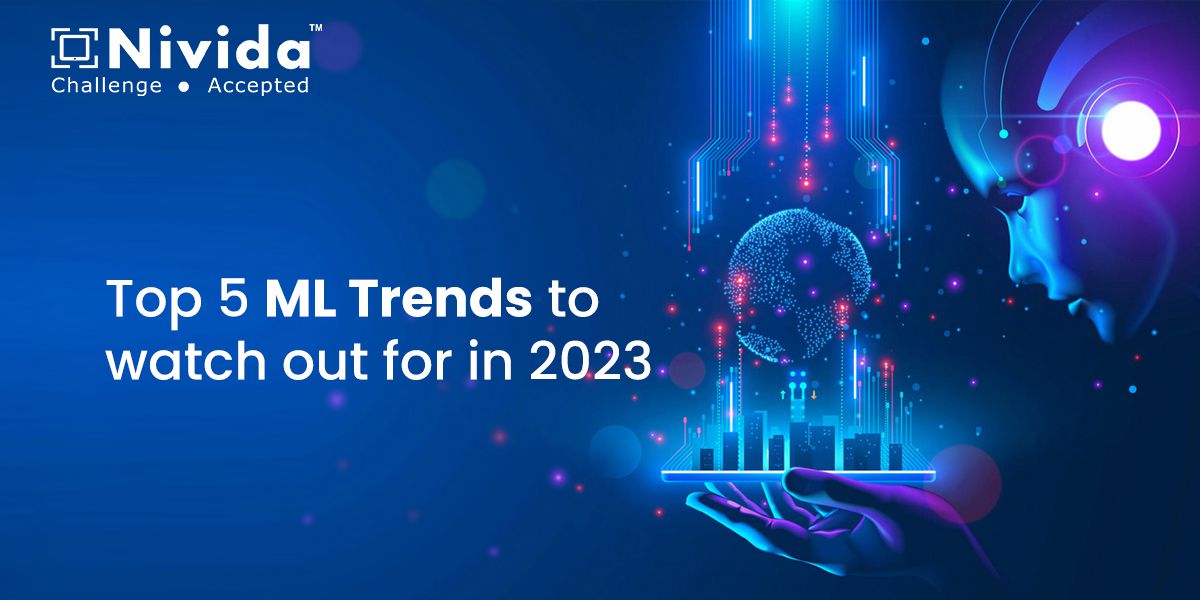These days, companies produce 2.5 quintillion bytes worth of data daily. In case you were wondering, a quintillion has 18 zeroes after its digit one. What a large sum of money!
No one should be surprised by the exponential growth of big data, given the widespread adoption of social media, digital communication tools, and contactless services.
So how can we maximize the use of this data in the years to come?
Organizations are on the lookout for fresh methods of data utilization as they enter the cloud computing era. Due to the impossibility of manually analyzing large data sets, many corporations are turning to Machine Learning (ML). According to a recent study published by Fortune Business Insights, the machine learning business is expected to rise to approximately $153 billion by 2027, a staggering increase from 2021's estimated $15.50 billion. This has all occurred in the span of ten years at the most! How things would be in the year, 2050 was completely beyond our wildest dreams.
See how Nivida Web Solutions anticipates ML technology will change the face of business in the coming years, as well as some of the developing trends in the field.
ML vs. AI vs. DL:
Machine learning, artificial intelligence, and deep learning are often used interchangeably but are actually different concepts. Let’s take a closer look at their differences.
Machine Learning:
Machine learning refers to training a computer to perform a task by feeding it data and allowing it to learn from it. This type of learning is often used to solve specific problems, such as recognizing speech, detecting spam emails, or predicting customer behavior. Machine learning can be divided into three main categories: supervised, unsupervised, and reinforcement.
Artificial Intelligence:
Artificial intelligence, however, refers to the broader concept of creating machines that can perform tasks that would typically require human intelligence, such as reasoning, problem-solving, and learning. AI can be divided into two main categories: narrow and general. Narrow AI systems are designed to perform specific tasks, while general AI systems are capable of performing any intellectual task that a human can.
Deep Learning:
Deep learning is a subset of machine learning that uses neural networks to model and solve complex problems. Neural networks are composed of layers of interconnected nodes, and the network "learns" by adjusting the weights of these connections to minimize errors. Deep learning is particularly useful for tasks such as image recognition, natural language processing, and speech recognition.
Advancements in ML:
Machine learning has been a driving force behind numerous ground-breaking developments across many industries in the last ten years. Here are five machine learning (ML) developments that are making waves and are here to stay.
Computer Vision:
In the field of AI, known as "computer vision," computers learn to recognize specific objects in still photos or moving footage. As ML has progressed, the error rate has dropped from 26% to 3% in just a decade.
Humans can complete some activities more quickly thanks to improved accuracy and techniques like cross-entropy loss. Can you spend a few minutes sorting through ten thousand dog photographs and put them into appropriate categories? Even if you're a dog expert, it'll take you weeks to complete the assignment, but a computer with a central processing unit would have done it in minutes. Companies are only now beginning to tap into computer vision's enormous medical and airport security potential.
Focused Personalization:
Learning about niche markets and what they like is another useful application of ML. Businesses may now better meet the demands of their customers by deploying recommender systems and algorithms, thanks to the improved accuracy of their models. How does Netflix choose what shows to suggest? How does Spotify know which music you want to hear? Recently observed phenomena can be attributed to the application of machine learning.
Improved Internet Search:
With the analysis of historical data, including search terms, user preferences, and interactions, machine learning aids search engines in improving their results. To give you an idea of scale, there have been two trillion searches on Google in 2021. Google's algorithms are always learning and improving thanks to the vast amounts of data at their disposal. That's probably the ML breakthrough that's been in the news the most recently.
Chatbots:
This is another method continually used by corporations all around the world. There is a direct correlation between the success of a business's marketing and customer care efforts and the adoption of chatbot technologies. You may have encountered a chatbot that encouraged you to provide an answer. You can improve the performance of these technologies by asking them more questions.
Transportation Advancements:
Using ML technologies is seen by many in the logistics and aviation industries as a method to improve productivity, safety, and ETA precision.
It may come as a surprise to learn that, with the help of ML, most of a plane's flight is now automated. In the near future, businesses will likely focus on exploring ML's possibilities in the transportation sector.
Top 5 ML Trends to watch out for in 2023:
Machine learning (ML) is a rapidly evolving field with new advancements and trends emerging every year. With the onset of 2023, there are several machine-learning trends that businesses and individuals should watch out for. Let’s take a closer look at the top 5 ML trends to watch out for in 2023.
Explainable AI:
Explainable AI (XAI) is set to be a major machine learning trend in 2023. XAI refers to the ability of machine learning models to explain how and why they arrived at a particular decision or prediction. This is important for industries such as healthcare and finance, where the ability to explain decision-making is critical. In 2023, we can expect to see an increased focus on XAI, with more businesses and organizations investing in developing models that can provide explainable outputs.
Edge Computing and Machine Learning:
Edge computing is a distributed computing model where computation is performed on the network's edge, closer to where the data is generated. Edge computing has become increasingly popular in recent years due to its ability to reduce latency and improve the performance of applications. In 2023, we can expect to see a greater convergence of edge computing and machine learning, with more machine learning models being deployed on edge devices. This will enable real-time decision-making and greater efficiency in applications such as autonomous vehicles and IoT devices.
Federated Learning:
Federated learning is a distributed machine learning technique where training data is decentralized and kept on individual devices. The model is trained on individual devices in federated learning, and only the model parameters are shared with the central server. This approach offers several advantages, including increased privacy and reduced data transfer requirements. In 2023, we can expect to see increased adoption of federated learning, particularly in industries such as healthcare and finance, where data privacy is a major concern.
Multi-modal Machine Learning:
Multi-modal machine learning refers to the use of multiple sources of data, such as images, audio, and text, to train machine learning models. In 2023, we can expect to see an increased focus on multi-modal machine learning, with more businesses and organizations investing in developing models that can handle diverse data types. This approach will be particularly useful in applications such as autonomous vehicles, where the ability to process and interpret multiple data types is critical.
Machine Learning Operations (MLOps):
MLOps refers to the practice of applying DevOps principles to machine learning workflows. MLOps aims to streamline the machine learning development process by automating data preparation, model training, and deployment tasks. In 2023, we can expect to see increased adoption of MLOps, with more businesses and organizations investing in tools and platforms to help streamline the machine learning development process.
Final Thoughts:
The field of machine learning is constantly evolving, and businesses and organizations must stay up-to-date with the latest trends and advancements to remain competitive. In 2023, we can expect to see an increased focus on explainable AI, edge computing, federated learning, multi-modal machine learning, and MLOps. By embracing these trends, businesses and organizations can leverage the power of machine learning to drive innovation and improve efficiency.

